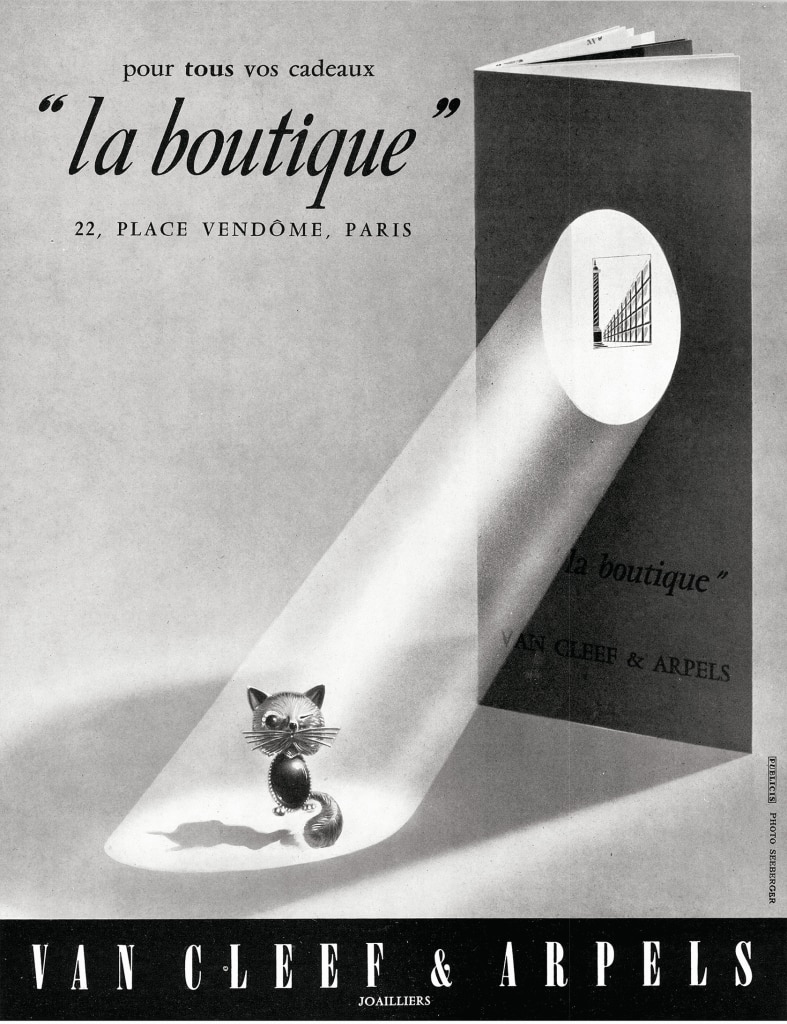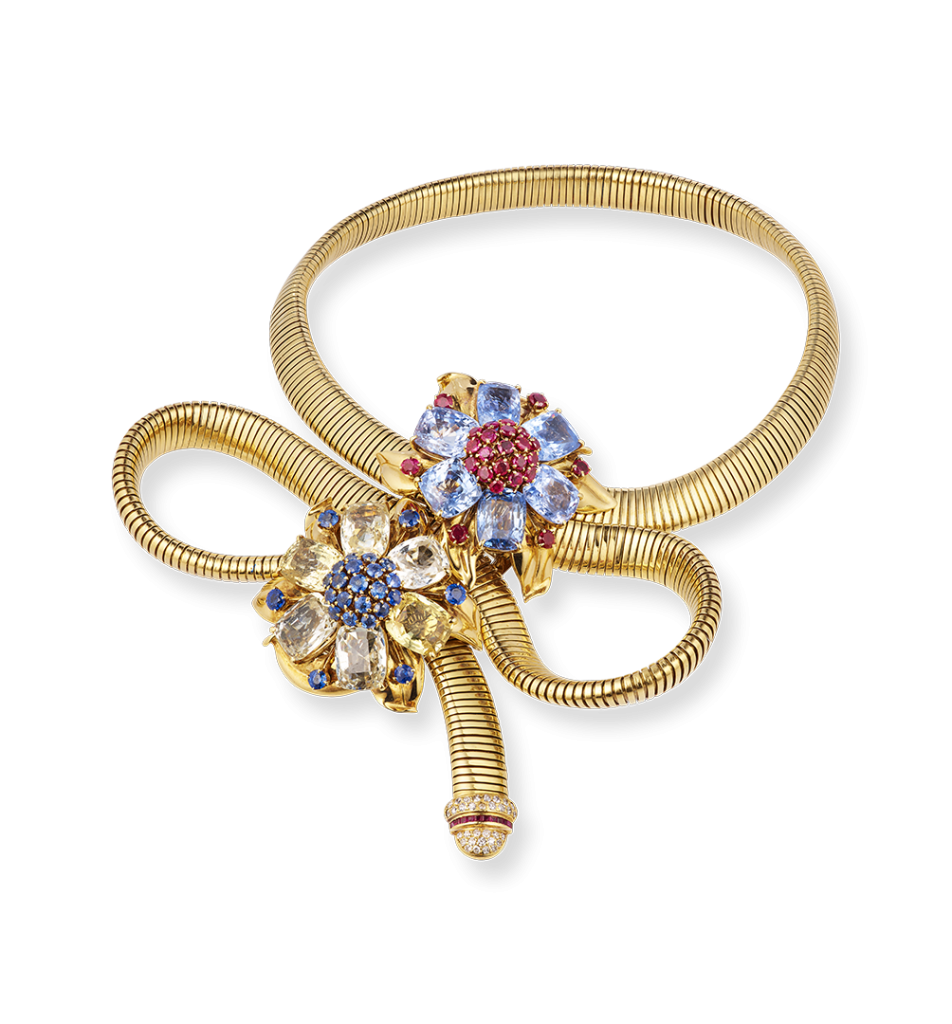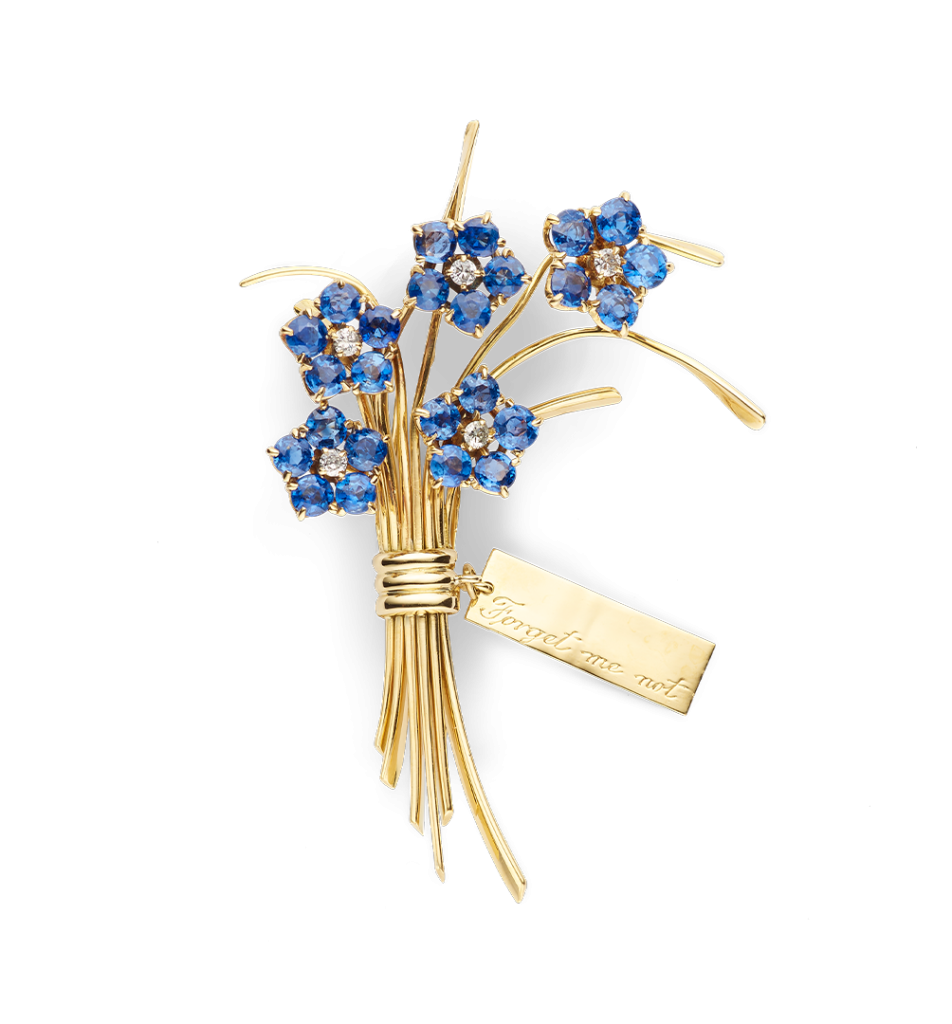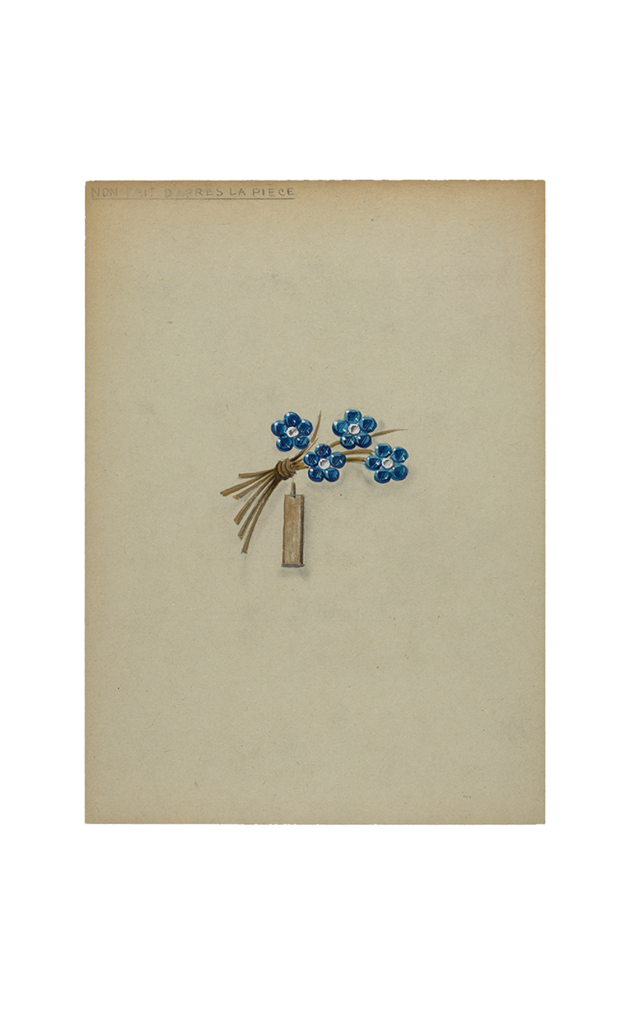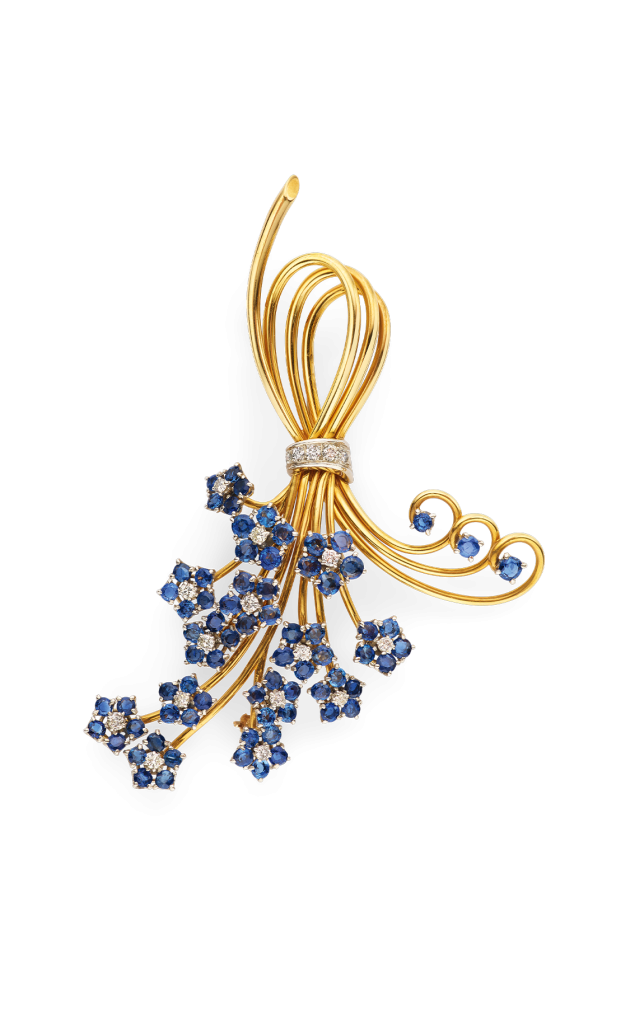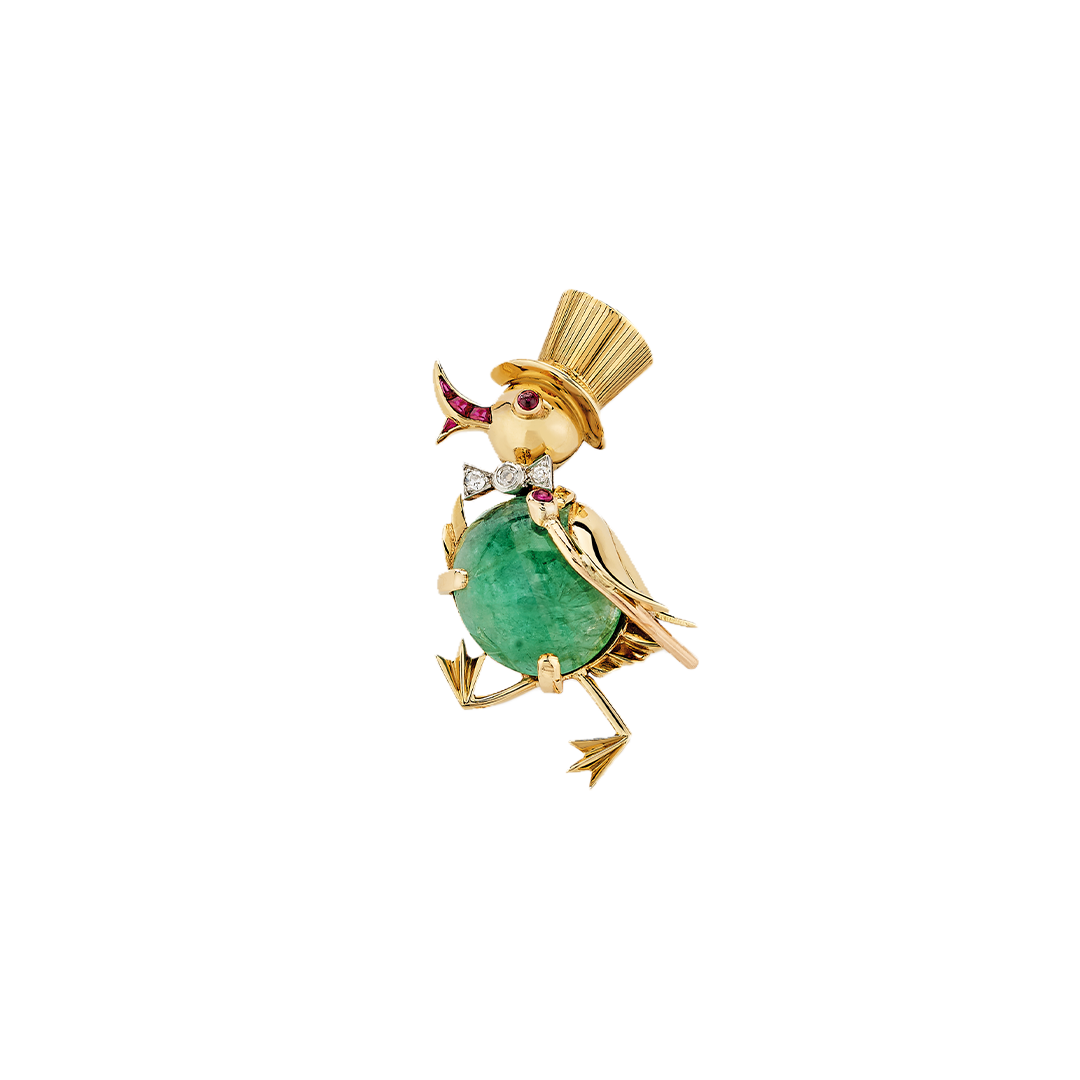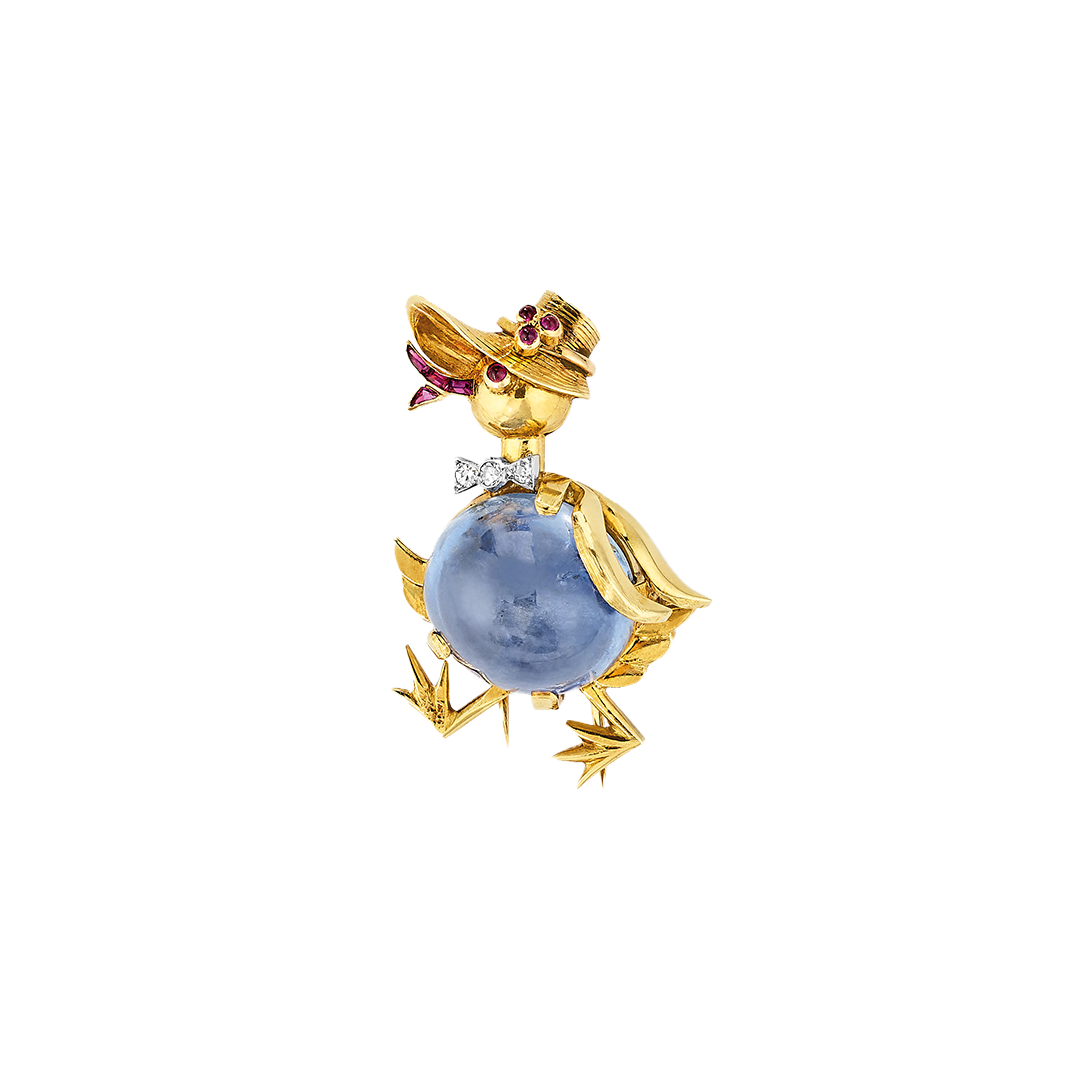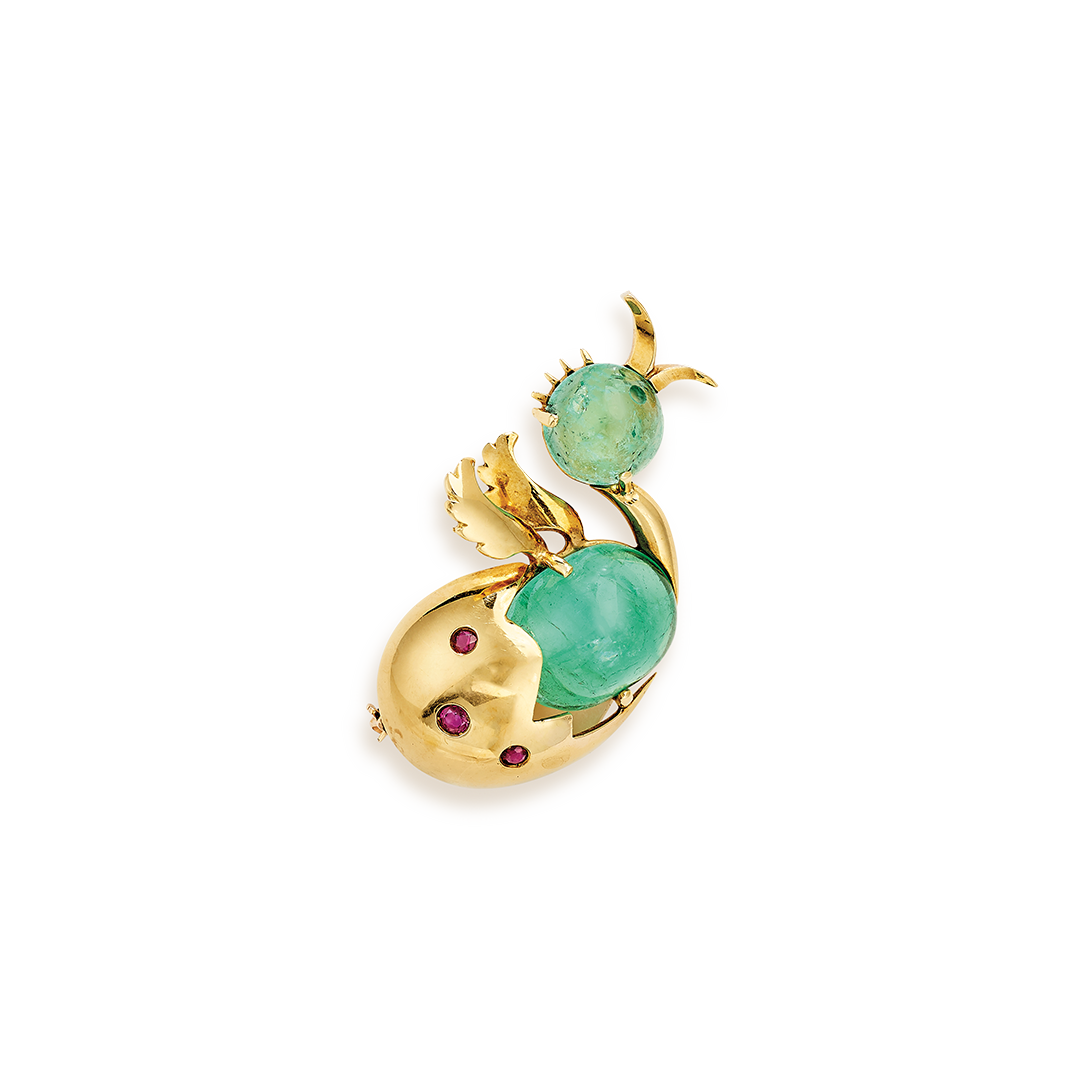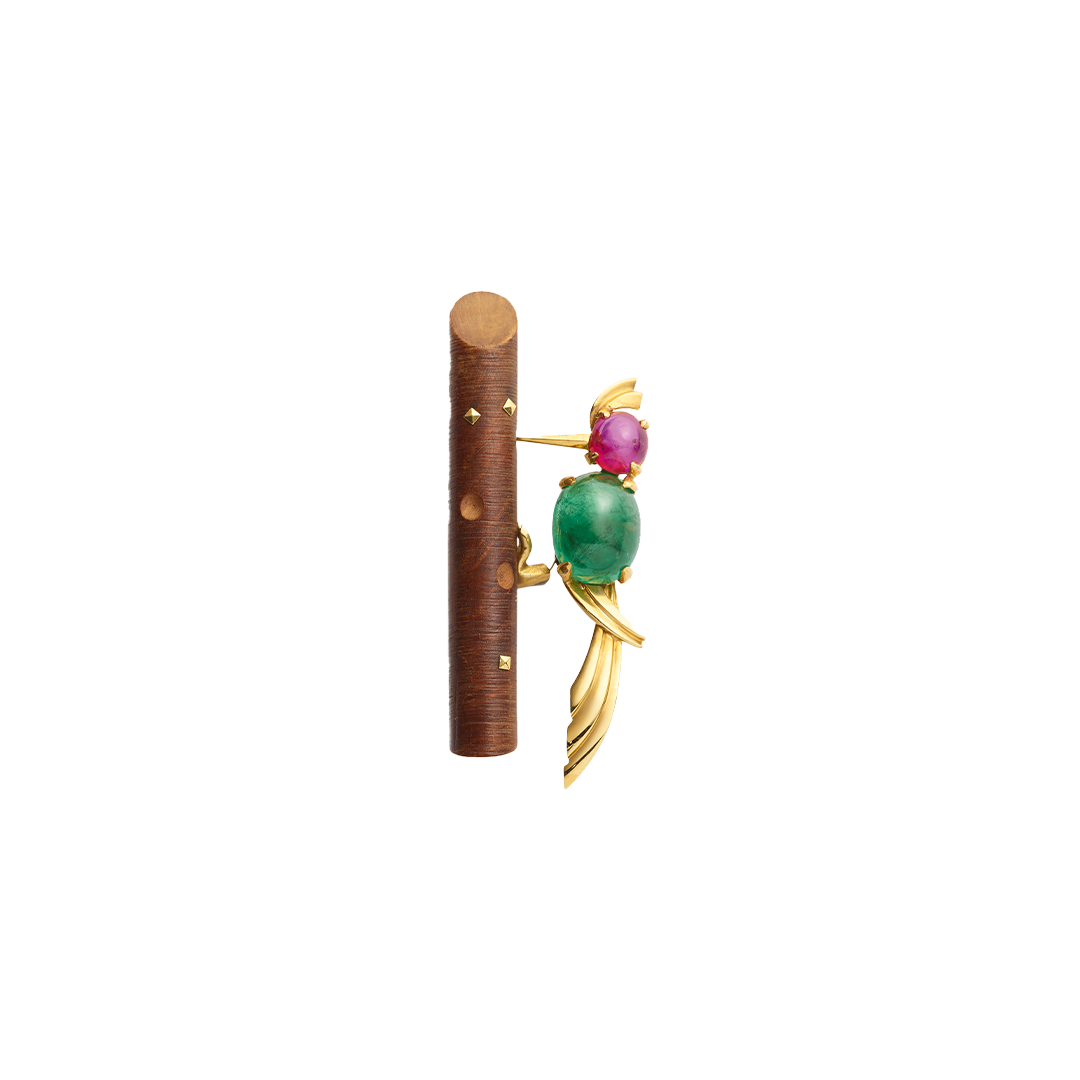Following on from the Paris Exposition Universelle of 1937, the World’s Fair held in New York in 1939 was the perfect opportunity for Van Cleef & Arpels to pursue its plans for international expansion.
Establishment of the New Yorker branch
Claude Arpels visited the United States in November 1938 and again in March 19391Memorandum addressed to Leidesdorf & Co., September 17, 1946, Van Cleef & Arpels Archives, New York.. The 1939 displays paid tribute to the Maison’s innovations, the Hawaii jewelry range and the Passe-Partout jewelry. The former was an esthetic innovation, reproducing small flower motifs in sapphires, rubies, and diamonds in different jewelry formats, while the latter was an entirely new jewelry format that was transformable and multi-purpose—the product of the recent collaboration with the Péry workshops. The Passe-Partout jewelry, composed of a ribbon of “tubogas” mesh and an ornamental motif equipped with a clasp system on metal rails, was created and patented in 1938, almost certainly with the New York show the following year in mind.
The Maison’s stand at the New York World’s Fair summarized these two innovations in a setting that used a wax mannequin to illustrate how the jewelry could be worn. The mannequin wore a white dress and yellow-gold hat and sported a Passe-Partout necklace with a Hawaii motif. The scene was completed by many other pieces of jewelry with small tricolor flowers and a Minaudière.
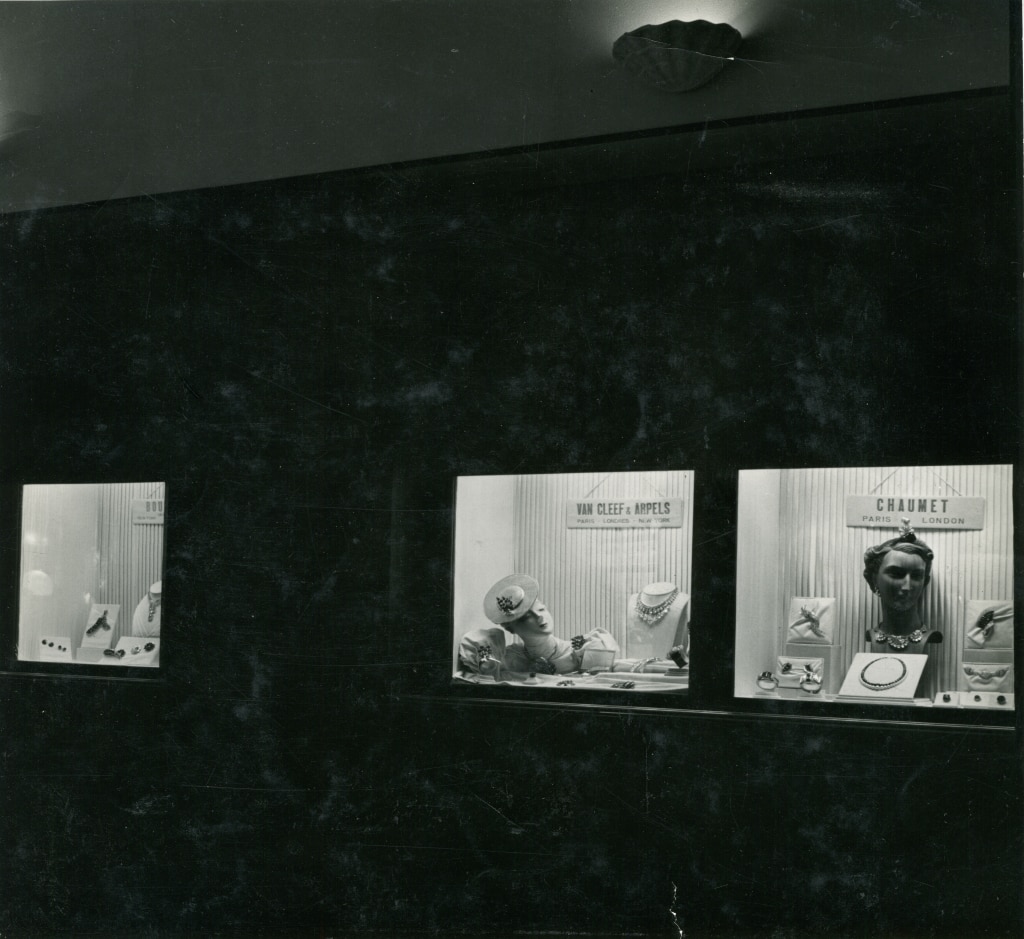
This important event also provided an opportunity for Claude Arpels to have another go at installing the Maison more permanently in the United States2Memorandum addressed to Leidesdorf & Co., September 17, 1946.. In April 1939, Van Cleef & Arpels took advantage of the inauguration of the World’s Fair to open its offices in the Maison Française, located at 610 Fifth Avenue3Memorandum. Also see: Anonymous, “Report of Activity in Metropolitan Real Estate Market,” The New York Times (December 27, 1939): 38.. The Maison Française was dedicated to French commercial, intellectual, economic, and touristic activities in the United States, and was part of a vast urban complex initiated by John Davison Rockefeller in 1931, that aimed to bring people together.
As the “economic heart of the metropolis,”4Henri Simoni, “ ‘Une maison française’ à New York,” L’Œuvre (December 11, 1932): 4. the prestigious Fifth Avenue, on which the earliest high-rises stood, with their theaters, banks, and American airline companies, also attracted shops and buildings housing the administrative headquarters of foreign countries. The Maison Française housed branches of renowned Parisian brands such as Baccarat and Parfums Molyneux, as well as the French Consulate and the Librairie de France. The importance of Van Cleef & Arpels’ New York branch was apparent within its first year, when it was “in charge of the World’s Fair and all the requests arising from clients interested by the pieces […] by exhibited Van Cleef & Arpels.”5Memorandum addressed to Leidesdorf & Co., September 17, 1946. It was also responsible for liaising between the American clientele and the Paris headquarters through the sale of jewelry designed and produced in Paris and imported to New York6Memorandum addressed to Leidesdorf & Co., September 17, 1946..
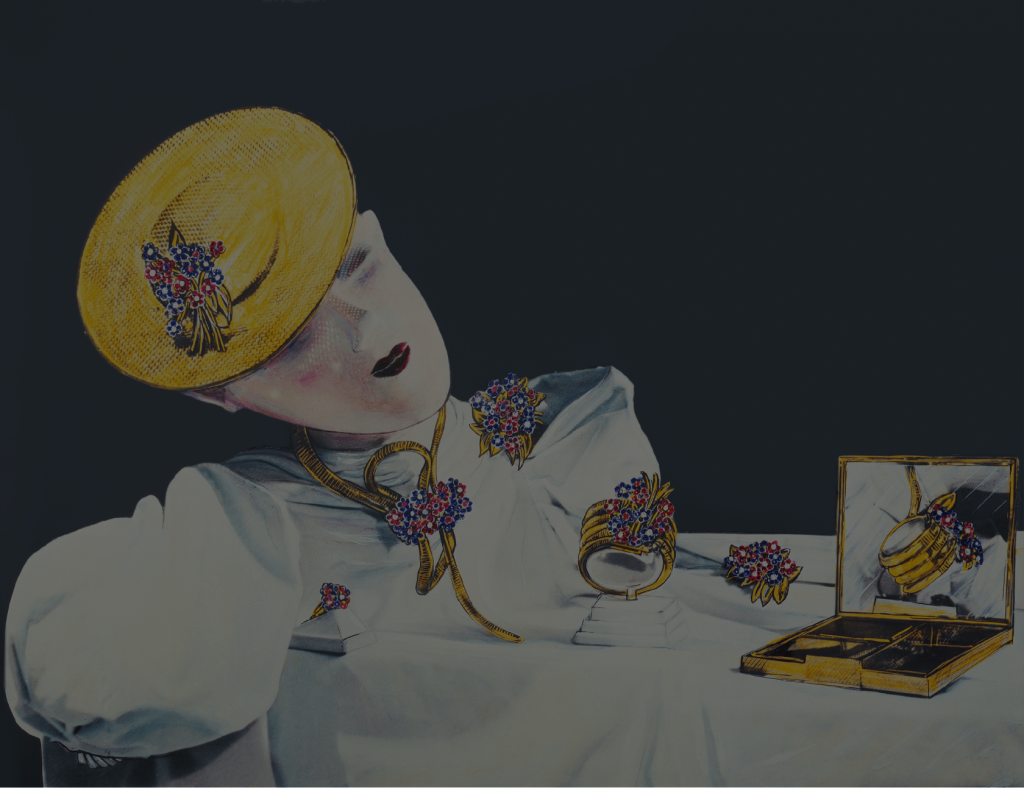
Van Cleef & Arpels under the Occupation
The parent company in Paris was struck by the death of one of its founders, Alfred Van Cleef7Anonymous, “Le Carnet du Figaro,” Figaro (June 16, 1938): 2. in 1938. Esther Van Cleef, his wife, and Renée Puissant, his daughter, participated in the company’s general assemblies as assignees and the latter “was named as manager, replacing M. Alfred Van Cleef.”8Archives commerciales de la France (September 28, 1938): 2748. The following year, with France being at war, the activity between the Paris parent company and the New York branch changed: the former went into dormancy during the Occupation, while the latter continued to grow. René Sim Lacaze9René Sim Lacaze, “Ce siècle avait un an,” [s.l.] (1994): 96., Jacques10Jacques Arpels was “recalled to duty by posters [placarded in the streets] on 27.8.1939” and “assigned to the 143th Battery of the 45th Group of the 406th Artillery Regiment of 11.CA (Combat Unit)” until his demobilization on “27.7.1940”. Proposal submission for Jacques Arpels to be awarded the Officer rank of the Légion d’honneur, N° C.12.119, Van Cleef & Arpels Archives, Paris. and Pierre Arpels11Minutes of the assembly general of the Van Cleef & Arpels company, December 30, 1940, Van Cleef & Arpels Archives, Paris. were mobilized in September 1939. In 1940, Jules and Louis joined Claude in New York by boat, while Renée Puissant moved to Vichy, in the Unoccupied Zone12Minutes of the assembly general of the Van Cleef & Arpels company, September 2, 1940, Van Cleef & Arpels Archives, Paris., taking with her the remainder of the stock of jewelry, gemstones, and archives that had not been able to be sent ahead to the United States13Memorandum addressed to Leidesdorf & Co., September 17, 1946..
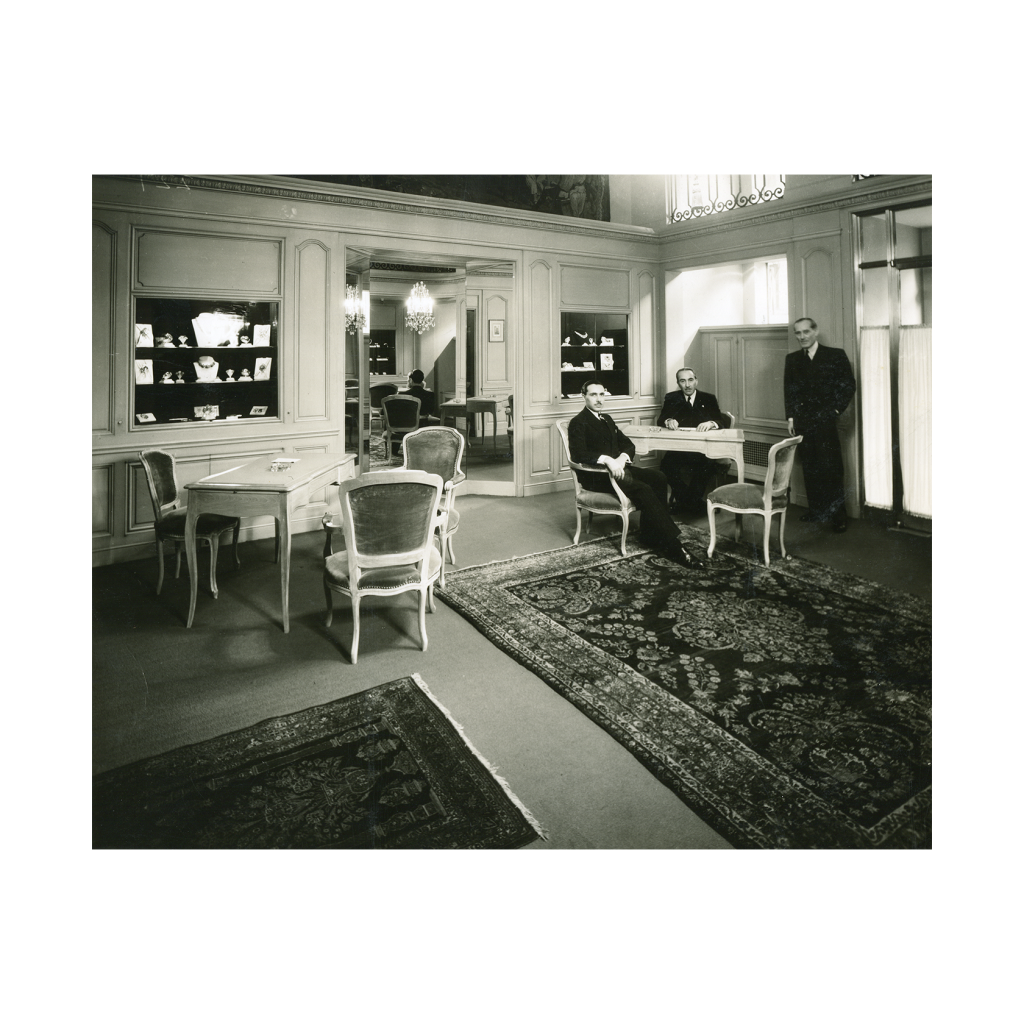
A succession of laws in 1940 relating to the confiscation of goods belonging to Jews in the Occupied Zone forced Renée Puissant to organize the transfer of the company. In a rare case of French Aryanization, two new managers were selected and nominated during the general assembly on September 2, 1940: Paul de Leseleuc and Raymond Havard, who were also designated as administrators. They were joined by Jean Aymé on March 24, 1941, who, together with Paul de Leseleuc, held the largest number of shares14Archives commerciales de la France (April 4, 1941): 1001–1002.. As a result, Renée Puissant, Charles, Julien, and Louis Arpels quit their function as managers15Archives commerciales de la France (April 4, 1941): 1001–1002.. The following month, the Secretary of State for industrial production nominated the jewelry-maker René Bry as commissioner of Van Cleef & Arpels16Report on the Van Cleef & Arpels company, General commission for Jewish affairs, February 13, 1942, Van Cleef & Arpels Archives, Paris.. In Vichy, the Maison no longer “practiced any activity.”17Lacaze, “Ce siècle avait un an,” 105. In 1942, René Sim Lacaze was dismissed18Lacaze, “Ce siècle avait un an,” 108.. In November of this same year, the German army invaded the Unoccupied Zone and barely a month later, Renée Puissant died.
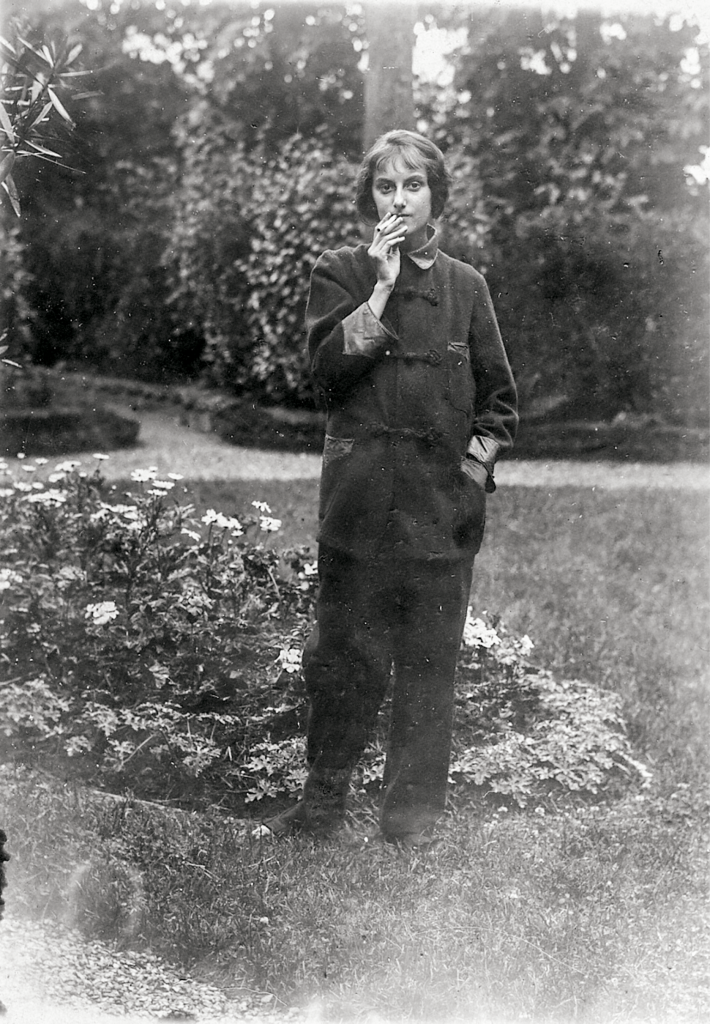
Van Cleef & Arpels’ production during World War II
Although the Place Vendôme shop remained open throughout the entire war, production was considerably reduced, with less than three thousand pieces of jewelry made between January 1940 and December 1944. For comparison, between January 1936 and December 1939, the Maison produced over seven thousand five hundred pieces. Several production workshops with whom Van Cleef & Arpels worked closely, disappeared from the archives for the duration of the war. This was the case for Péry and Lenfant. To compensate for this loss of savoir-faire, the Maison turned to workshops located in the Free Zone, like Billy in Cannes19For further information on this workshop: Rémi Verlet, Dictionnaire des joailliers, bijoutiers et orfèvres en France de 1850 à nos jours (Dictionary of Jewelers and Goldsmiths in France from 1850 to the present) (Paris: Gallimard, 2022), 256. and Salamon in Lyon. The relationship with Langlois was maintained, providing for the production of boxes, notably Minaudières, Bouquet brooches, Hawaii jewelry, several mystery set pieces and, above all, patriotic jewelry.
Late 1939 and early 1940 saw the return of a range of jewelry first produced during the First World War, the Touch Wood range, notably identity tags made of wood, intended to bring good luck to the men sent to the Front.
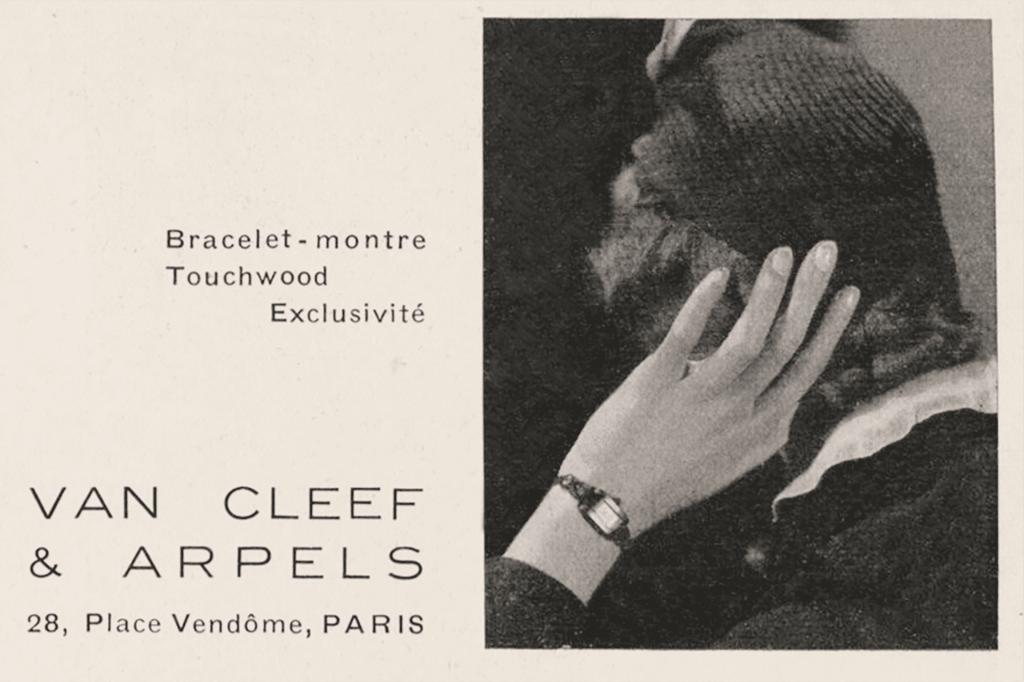
A special commission made to the Maison in 1939 revived the iconography developed at the time of the First World War: the storks of Saint-Galmier, the emblem adopted by the SPA26 squadron in 1916. Another popular design during the first half of the 1940s was the “Small Myosotis bouquet” clip usually with five stalks of Myosotis flowers that represented memory and fidelity. The sapphires, representing the violet-tainted blue of these flowers, were sometimes accompanied by rubies and diamonds.
While restrictions were imposed by the German administration regarding the sale of precious stones and metals, the “famous jewelers adapted admirably to the circumstances.”20“La fabrication des bijoux” (French news section), Les Actualités mondiales (January 1, 1941). INA Archives, Paris. At an esthetic level, the material difficulties led to “a wider use of unadorned metal” and “translucent enamels in rich tones,” “precious stones [being] ever rarer.”21“La fabrication des bijoux” (French news section), Les Actualités mondiales (January 1, 1941). INA Archives, Paris. The designs for patriotic jewelry eloquently illustrated the economy of means deployed during the Second World War. These commemorative pieces often told a story, celebrating the events of 1944, for example. One such is a lapel chain in yellow gold strung with seven charms depicting a Lorraine Cross, a tank, a G.I., a parachutist, a Jeep, a packet of Chesterfield cigarettes, and some chewing gum.
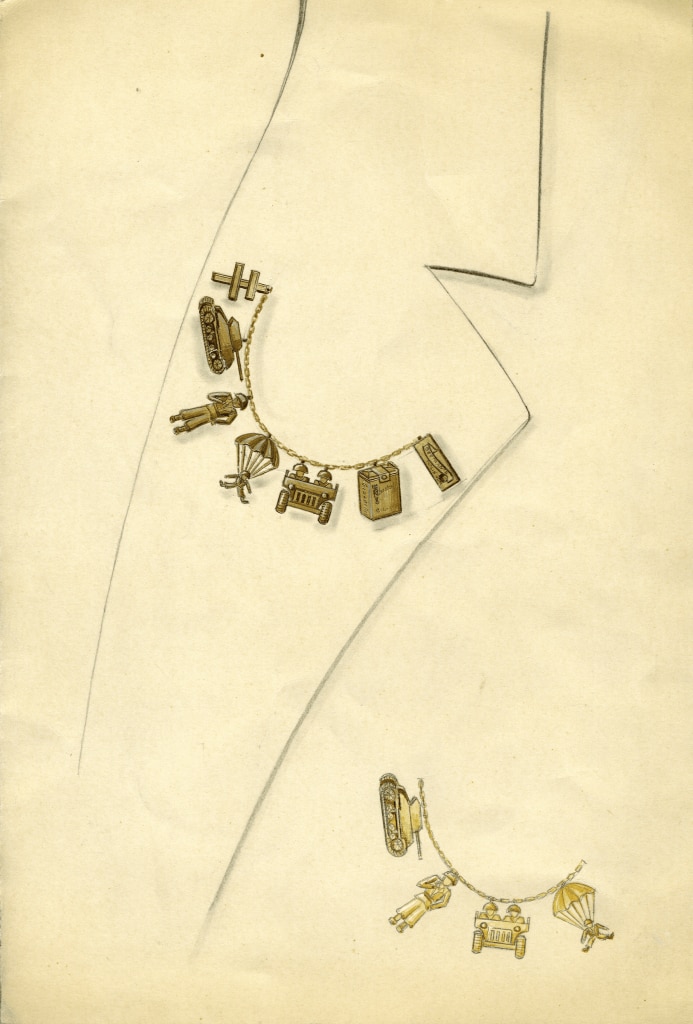
The spread in the United States
The Maison continued to prosper in the United States, in spite of the “small number of sales” made during its “first year” of existence, in 1939. “The branch had to make contact again with American clients, [but] many of them continued buying in France or ordering pieces made in Paris.”22Memorandum addressed to Leidesdorf & Co., September 17, 1946. In January 1940, the Maison decided to expand its New York premises, moving to the International Building, also located in the Rockefeller Center. By the end of the year, however, the Maison was on the move again, this time in order to have a street frontage. “Van Cleef & Arpels occupied the shop, basement, mezzanine and upper floor of 744 Fifth Avenue.”23Anonymous, “French Jewelers Take 5th Ave. Unit,” The New York Times (December 5, 1940): 47.
The opening of this shop contributed to the substantial growth in the turnover of Van Cleef & Arpels Inc., which doubled from 1940 to 194124Memorandum addressed to Leidesdorf & Co., September 17, 1946.. Like the company in Occupied France, Van Cleef & Arpels Inc. sold numerous patriotic jewelry designs. Many more of them were produced after 1942, after America had joined the war the previous year. They tended to be clips representing the different professions involved in the fighting, like the “Canteen Worker” or the “Marching Soldier.” Other more allegorical ones evoked symbols of America triumphant, such as the “Uncle Sam” clip which was used in a 1942 advertisement with martial connotations.
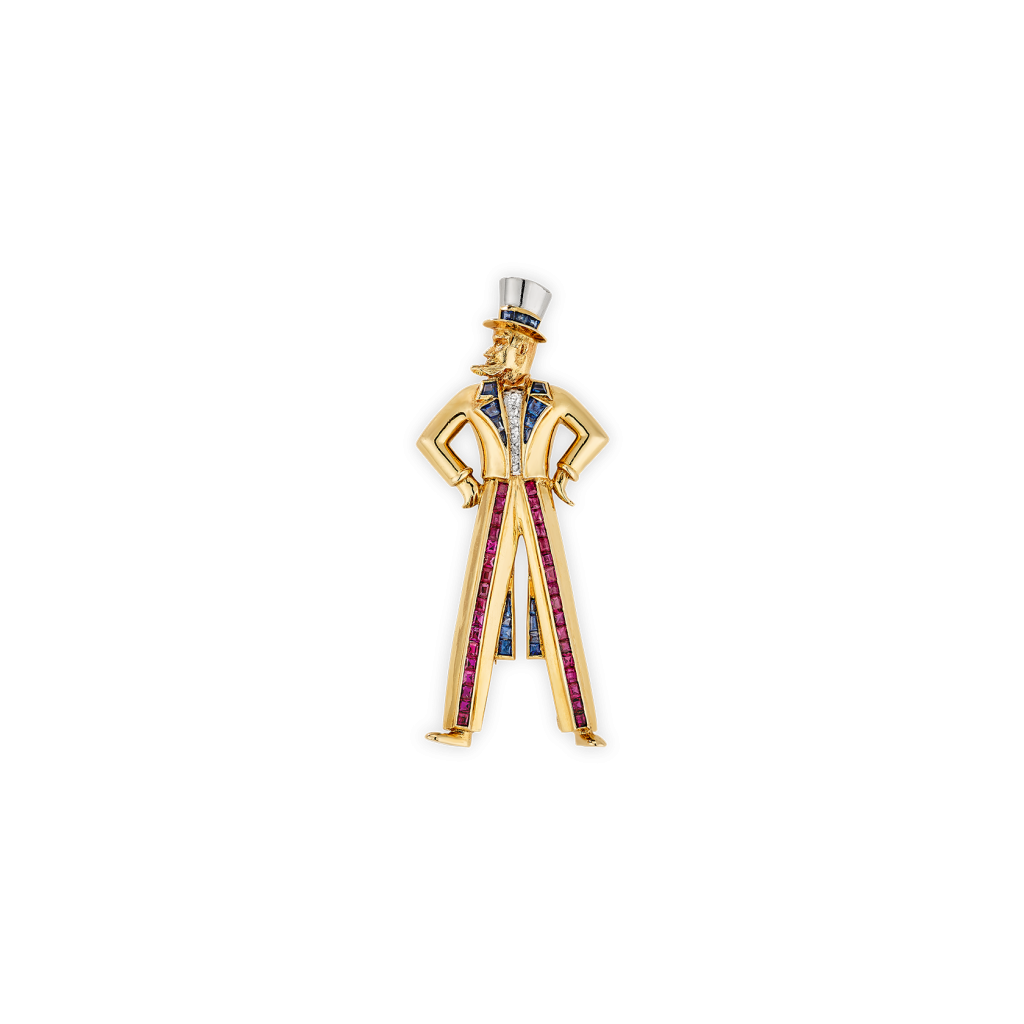
Meanwhile, the Maison was extending its sphere of influence beyond the city of New York, across the United States. Not only did it have display cabinets in exclusive New York hotels—notably Hampshire House, Sherry-Netherlands, and the Colony Restaurant—but in 1941, it opened a seasonal branch in Miami Beach, Florida. The following year, the latter was replaced by a shop in Palm Beach, Florida25Memorandum addressed to Leidesdorf & Co., September 17, 1946.. Advertising was another important factor in the development of Van Cleef & Arpels Inc. Every year from 1941 to 1944, the Maison doubled its advertising budget, which led to consistent growth in the turnover of the American branch.
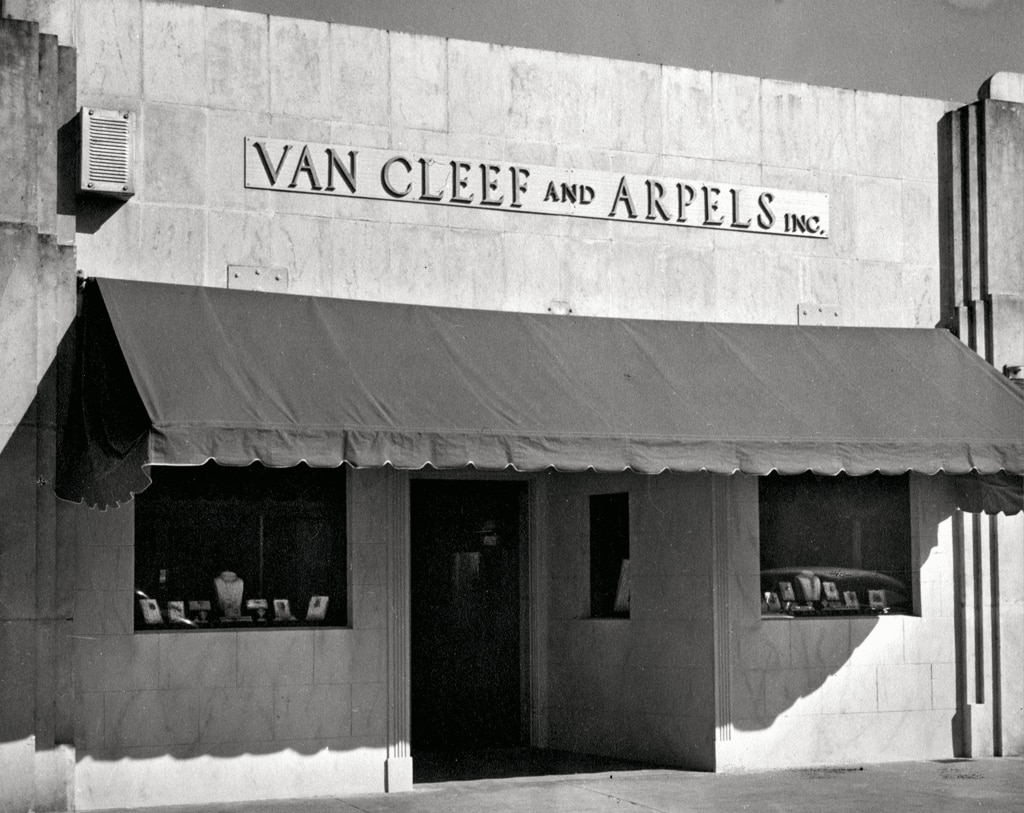
New York, new international capital of arts
With the Armistice, links between the two companies were re-established. “Misters Louis and Jules Arpels decided to dedicate themselves completely to the American branch, leaving the Paris firm in the care of the sons of [the latter],”26Memorandum addressed to Leidesdorf & Co., September 17, 1946. Pierre and Jacques Arpels. The Paris firm was given back to the Arpels family in 194427Minutes of the general assembly of the Van Cleef & Arpels company, October 26, 1944, Van Cleef & Arpels Archives, Paris.. Jacques and Pierre were then named as its managers28Minutes of the general assembly of the Van Cleef & Arpels company, October 26, 1944 and December 30, 1944, Van Cleef & Arpels Archives, Paris., together with their brother Claude, Renée Puissant’s heir29Minutes of the general assembly of the Van Cleef & Arpels company, October 10, 1944, Van Cleef & Arpels Archives, Paris.. After five years of separate development, the French and American branches had to be reunited in the immediate post-war period.
At the same time, New York replaced Paris as the capital of the international arts scene. The emigration of many well-known European artists such as Walter Gropius, Laszlo Moholy-Nagy, Josef Albers, and Piet Mondrian to the United States, as well as the emergence of major American artists like Jackson Pollock, Georgia O’Keeffe, and Robert Rauschenberg made America, and in particular New York, fertile ground for the avant-garde of the second half of the twentieth century. Many different artistic movements and novel practices that would shape the decades to come burgeoned during the late 1940s. Abstract expressionism or more specifically, the New York School, came to the fore in 1946. The Beat Generation, which originally referred to a group of novelists and poets, was soon widened to include other creative fields, from music to film, and from the visual arts to the emergence of happenings 30Philippe-Alain Michaud, ed., Beat Generation. New York, San Francisco, Paris [exhib. cat.] (Paris: Éditions du Centre Pompidou, 2016)..
Given the explosion of the arts across the water, it is hardly surprising to see members of the Arpels family focusing their efforts on the American market. When the Parisian luxury industries, wanting to revive their reputation that had been drastically impacted by the Occupation, organized the Théâtre de la mode as a means of so doing, Van Cleef & Arpels chose to partake in the New York version rather than the French one. This event, organized by the trade union of Parisian couture in 1945, brought together all those involved in the creation of women’s wardrobes and finery—couturiers, hair stylists, makers of fashion accessories—and used “dolls” to parade, like models, in a theatrical setting devised by artists, including Christian Bérard, Jean Cocteau, and Emilio Terry.
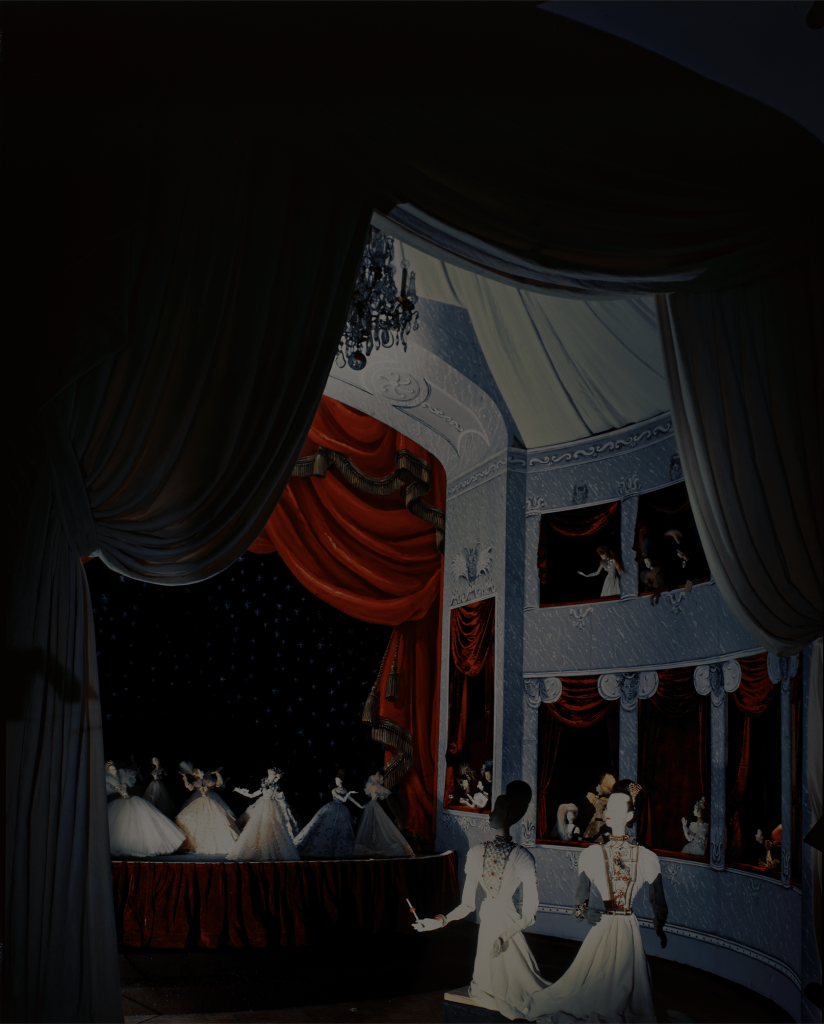
The Paris show was a huge success and it was decided to take it overseas to promote French haute couture and the luxury professions. In New York, Van Cleef & Arpels was responsible for adorning dresses by Maggy Rouf and Elsa Schiaparelli with yellow-gold toreador epaulettes set with rubies and tasseled cords.
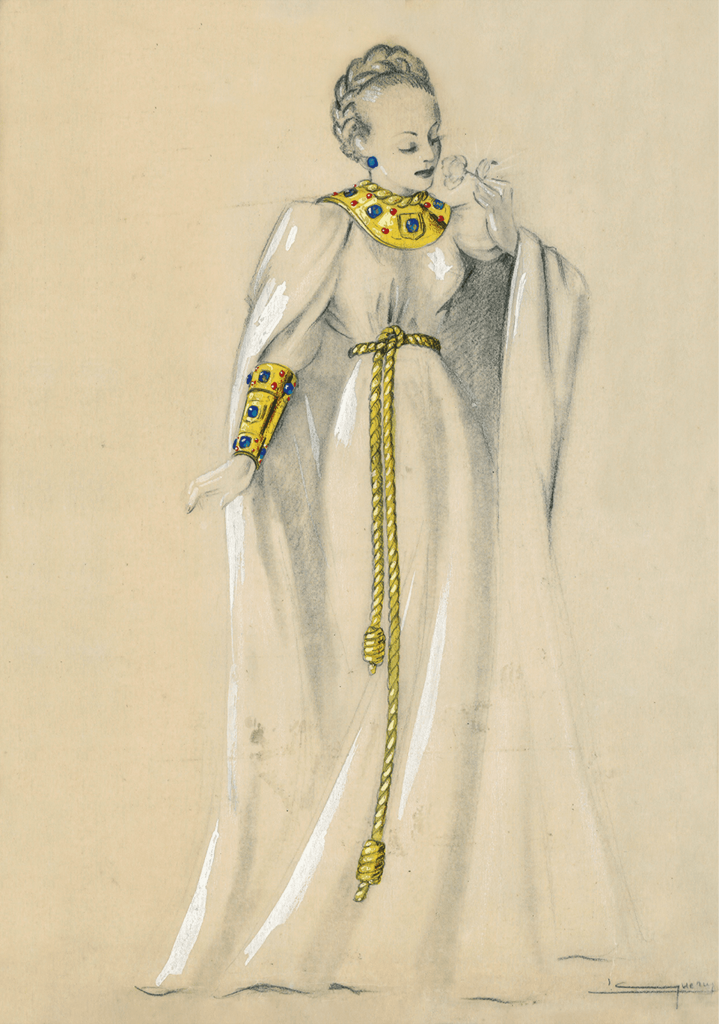
The renaissance of parisian luxury arts
The luxury arts in Paris underwent a gradual renaissance after 1945, no doubt launched by the Théâtre de la mode show at the Pavillon de Marsan. The arts scene also picked up again, this time in the Saint-Germain-des-Prés district which was the intellectual heart of the capital where the young crossed paths with existentialist philosophers, American jazz players, and artists.
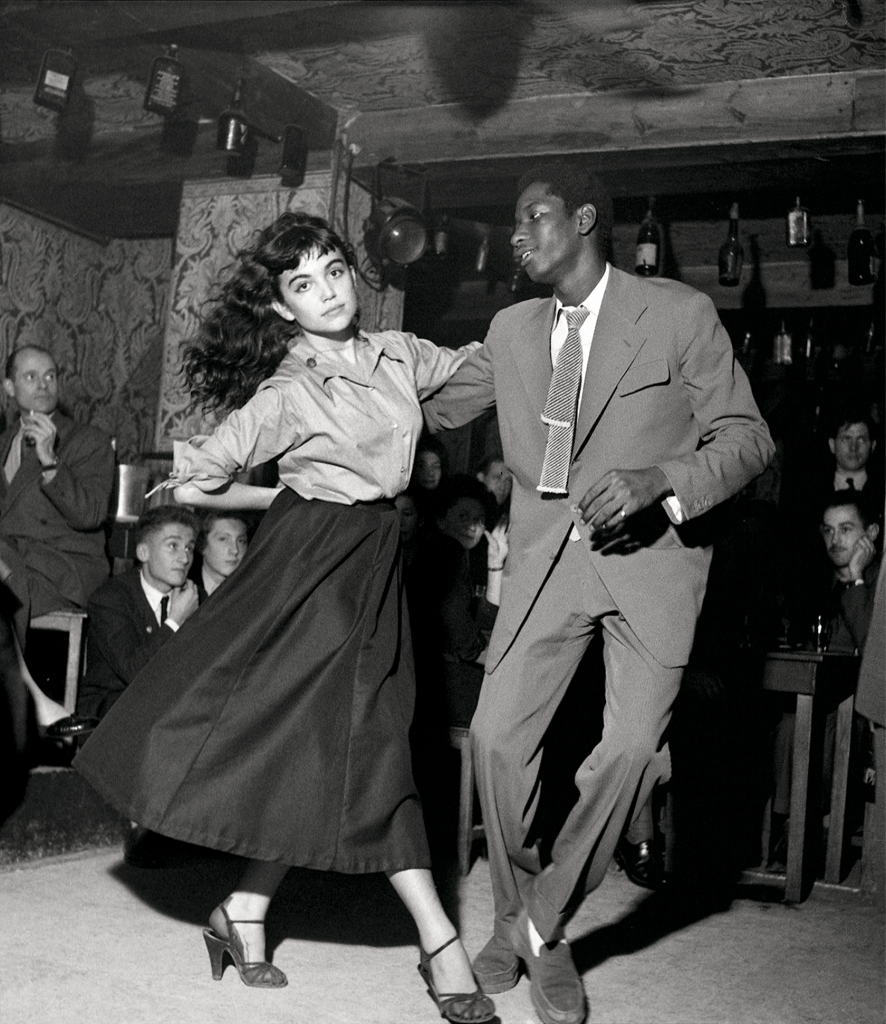
In the fashion world, the success of the New Look, the term given by the American press to the new silhouette created by Christian Dior in 1947, redefined the codes of Parisian elegance31Florence Mûller, ed., Christian Dior. Designer of Dreams [exhib. cat.] (Paris: Thames & Hudson, 2017).. Lavish quantities of fabric evoked the opulence of the early part of the century.
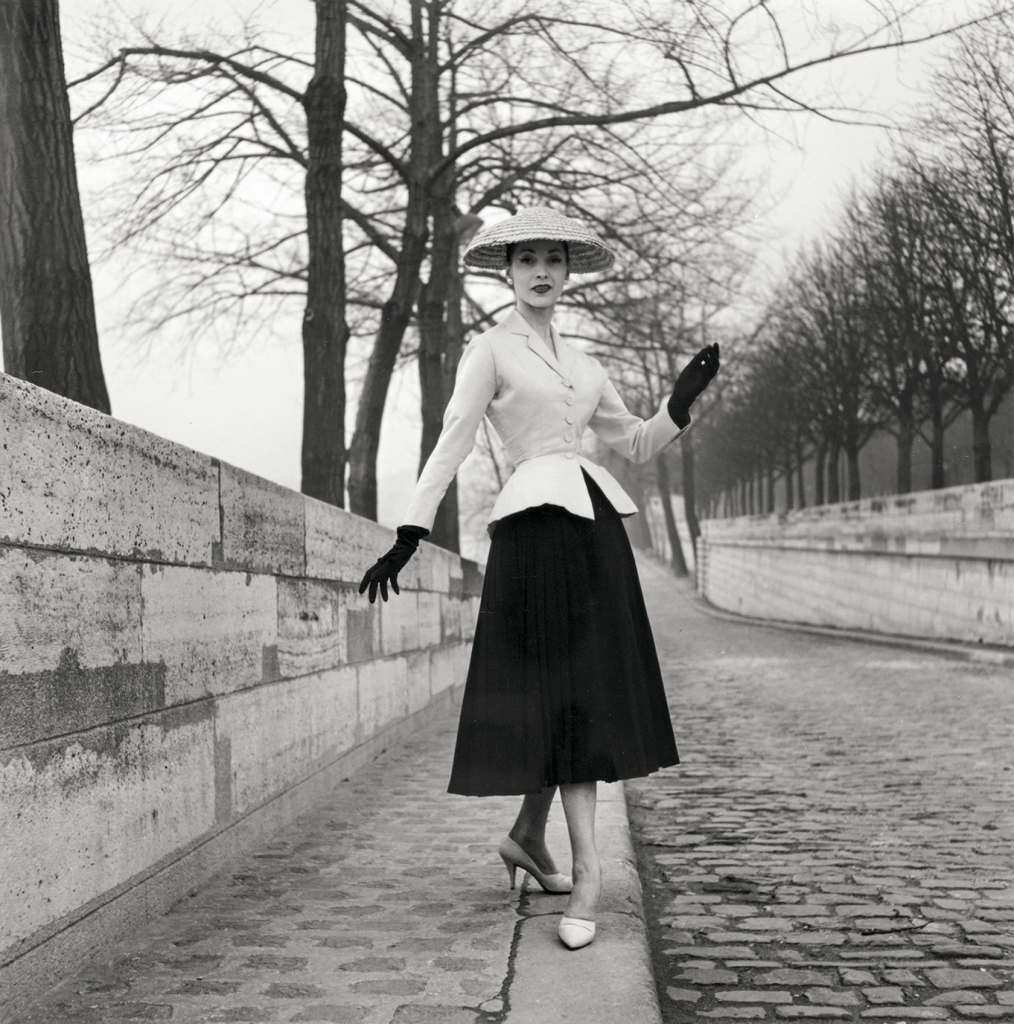
With the return of society events and duties, dress codes were reinvented and manifest in the cuts and fabrics of garments as much as in the materials and types of jewelry. It was the start of daytime jewelry in yellow gold, and evening jewelry focusing on diamonds and platinum. The Maison’s production soon recovered its pre-war rhythm: between January 1945 and December 1949, more than seven thousand pieces were created. In order to boost their marketing, a new advertising strategy was instigated in 1946, founded on the immediate and evocative effectiveness of slogans. In keeping with the statement that the “value” of a piece of jewelry depends on the “notoriety […] [of] its creator,”32Van Cleef & Arpels advertisement, Album du Figaro (1948), 61. the Maison began adding the following phrase to its advertisements: “There are signatures for which one cares.”33Van Cleef & Arpels advertisement, Album du Figaro (1948), 61.

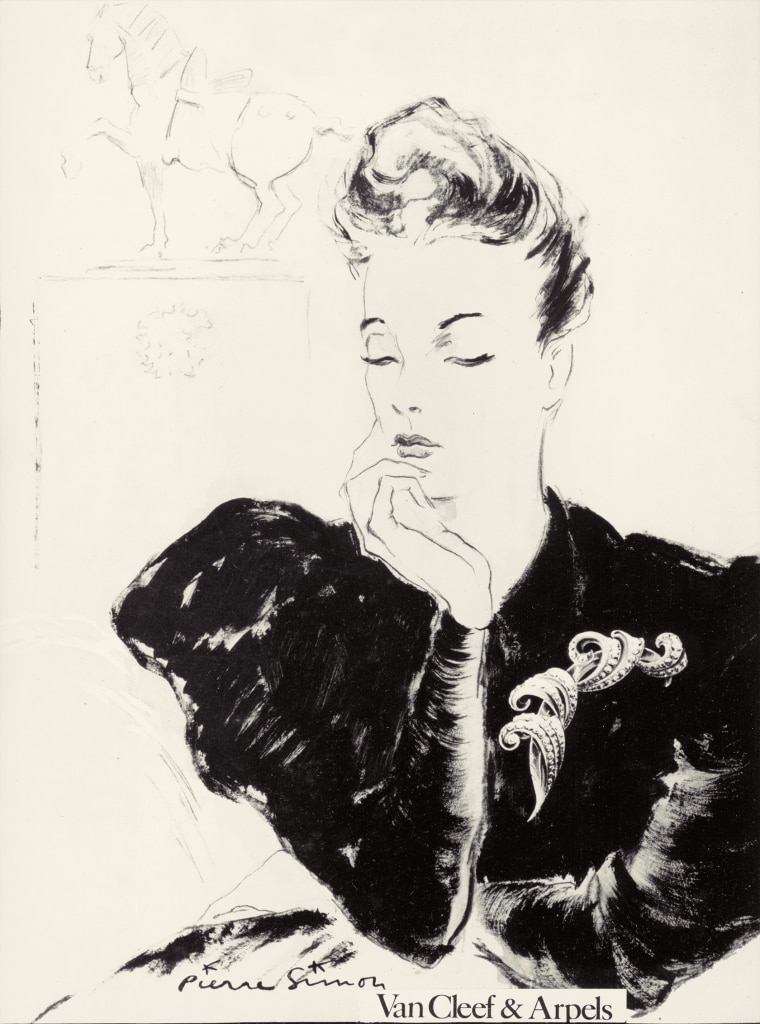
Van Cleef & Arpels’ new codes
In 1951, Charles Arpels, the company’s second founder, died 34Death certificate of Salomon, known as Charles Arpels, August 2, 1951, N° 94, Archives Départementales des Yvelines.. It was therefore down to the next generation—Claude, Jacques and Pierre Arpels—to make the Maison live on and prosper. Profound structural changes occurred in Western society in the post-war period, namely the advent of mass media, the transformation of family relationships, the increase in purchasing power, and wider access to secondary education. These factors favored the emergence of a proactive youth with its own codes and icons35See Dick Hebdige, Subculture: the Meaning of Style (London: Routledge, 1979) on the formation of youth cultures and their developments into subcultures and countercultures during the 1950s, 1960s, and 1970s.. In light of this and with the advent of a new clientele, Van Cleef & Arpels experimented with new designs, together with the Péry workshops. These included animal clips whose stylized design referred to popular culture and whose economy of materials lessened the cost to consumers.
This innovative marketing strategy was soon followed by the opening of a new sales space within the Place Vendôme premises—the Boutique—the keystone to the Maison’s success in the second half of the twentieth century.
